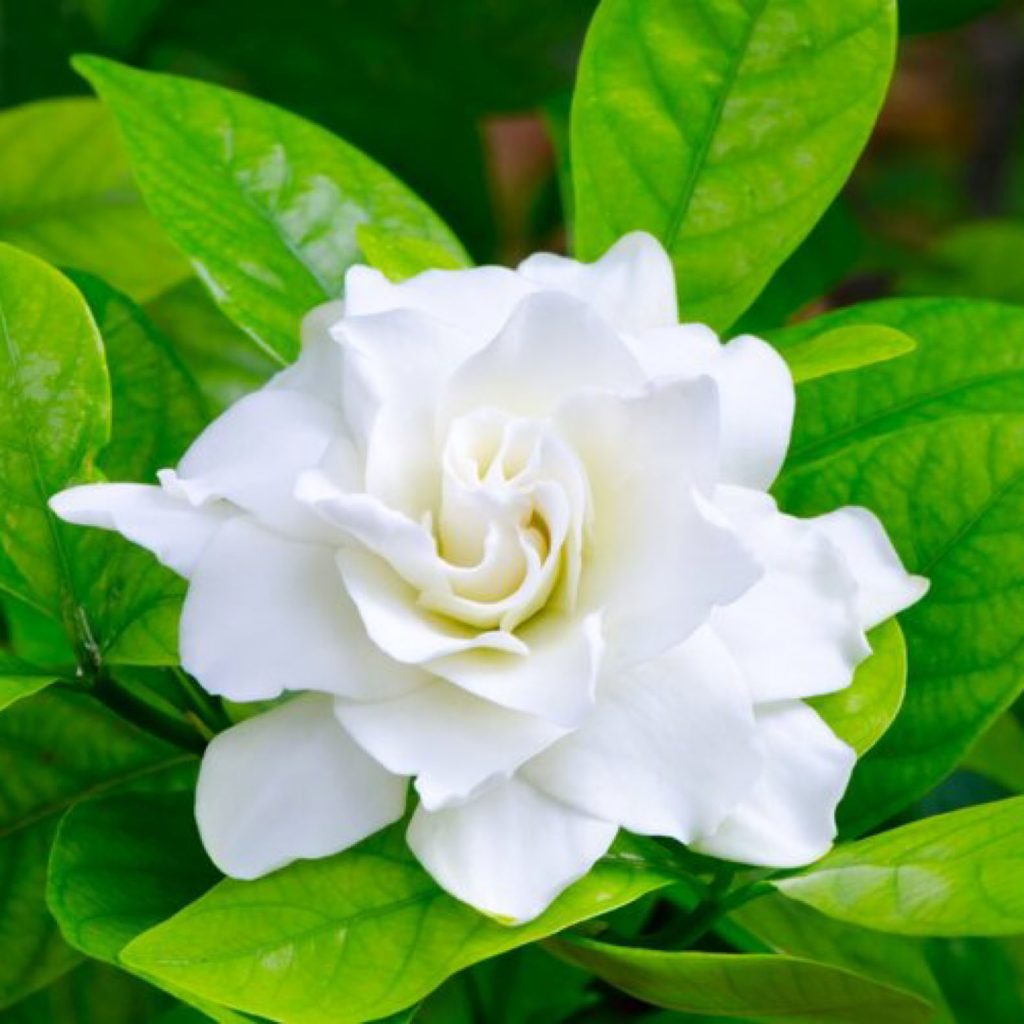
The Kuchinashi (Gardenia) that blooms at the beginning of the rainy season has an unparalleled whiteness. As the rainy season progresses, it turns cream-colored and eventually wilts, resembling the color of custard cream. The leaves undergo the same transformation. They start off as young leaf green and gradually change to deep green. The original Kuchinashi is a large plant that produces pure white six-petaled flowers with a strong fragrance, and in autumn, it bears orange-red fruits. The photo shows a variety called “Ooyaekuchinashi,” which is more popular and has double flowers but does not produce fruits. The delightful fragrance is one of the great charms of the Kuchinashi. The three trees, Kuchinashi, Kinmokusei (Fragrant Olive), and Jinchoge (Mock Orange), are sometimes referred to as the “Three Major Fragrant Trees.” Particularly during their blooming season, you can enjoy their sweet scent. While the Kuchinashi is originally from Asia, it was introduced to Europe in the 19th century, where the fragrant white flowers became popular and used as a raw material for perfumes. Additionally, it is used in traditional Chinese medicine, as well as in dyes and food coloring. In Fujieda City, Shizuoka Prefecture, there is a yellow-colored rice dish called “Seto no Some-meshi” that has been sold since the Sengoku period. It is also colored using Gardenia. Eating this rice ball instantly relieves the fatigue of a long journey on the Tokaido road. Most likely, both Yaji-san and Kita-san have also eaten it.
梅雨初めに咲くクチナシはこれほどの白さはない白さです。梅雨が深まるに連れてクリーム色に、最後にはカスタードクリームのような色になって萎れていきます。葉も同じ。初めは若葉色ですが、深緑に変わっていきます。元々のクチナシは大型で純白の6弁花を咲かせて強い香りを漂わせ、秋には橙赤色の果実をつけます。写真はオオヤエクチナシと言う品種で、こちらの方がポピュラーで、八重咲で実はつけません。香りの良さはクチナシの大きな魅力のひとつです。クチナシ・キンモクセイ・ジンチョウゲの3つの木は、三大香木と呼ばれることもあります。特に開花時期には甘い香りを堪能できます。クチナシはアジア原産の花ですが、19世紀にアジアからヨーロッパに渡り、ヨーロッパではこの純白の甘い香りのする花が気に入られ、香水の原料となりました。また、漢方薬を始め、染料や食紅にも使われます。静岡県藤枝市には、戦国時代から販売されている「瀬戸の染飯(せとのそめいい)」と言う黄色いおこわがあります。これもクチナシで色付けされています。このおむすびを食べると東海道の長旅の疲れもすっ飛びます。多分、弥次さん喜多さんも食べたことでしょう。
